
ABSTRACT
Lean programmes are often driven by non-maintenance people who do not really understand the value maintenance adds, and therefore maintenance individuals are often excluded from such programmes. Using an approach combining Lean and Reliability Centred Maintainance recognises the value maintenance professionals can bring to productivity and underlines the point that “you cannot be lean if you are not reliable”.
The adoption of Lean Manufacturing principles pioneered in the automotive industry reduces the risk of failures caused by human error or imprecise methodology and therefore makes it easy to do right and difficult to do wrong. RCM, on the other hand, brings the rigorous and detailed logical engineering approach necessary to satisfy the very high levels of safety and reliability demanded by the aircraft industry.
Essential to the deployment of Lean RCM™ is a partnership between operations and maintenance, giving each function the opportunity to contribute their knowledge and experience to the analysis and the resulting solution. Contribution and involvement ensures engagement and ownership of the outputs.
The resulting integrated Lean RCM approach has a visual “front-end” which runs in parallel with computerised maintenance management systems thus satisfying two important needs for operational excellence – KISS (keep it simple stupid) and big-data capture.
Companywide “Lean” strategies often overlook the important function played by the maintenance department and fail to really understand how reliability is a foundation of a lean environment. In one international food company in the US, the author asked members of the maintenance department what their participation and contribution to the recently completed Lean programme had been. I was surprised to hear the answer was “nothing much… oh, we were asked to put up all the shadow boards”.
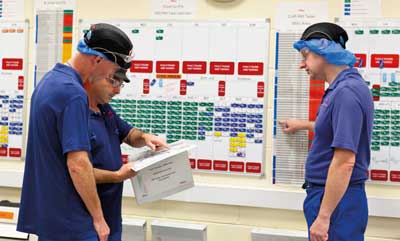
Other organisations adopt the Total Productive Maintenance (TPM) approach to define preventive maintenance strategies for reliability. While TPM is a renowned and successful approach to improving productivity and in particular Overall Equipment Effectiveness, it lacks specific tools and techniques to define preventive maintenance strategies that relate to the standards of performance required from the equipment in its operating environment, and in relation to its modes of failure and associated failure development period.
In one organisation which had completed TPM, a set of aesthetically pleasing autonomous maintenance procedures had been introduced for operators to follow to maintain the reliability of the equipment. Digging deeper, it was quickly apparent that these tasks had been abandoned soon after their introduction due to the fact that every task was scheduled to be done every day, requiring approximately five hours per shift by the equipment operator: a totally impractical proposition.
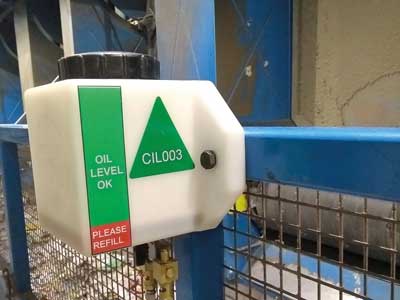
A third approach, and perhaps the most common, is to find an organisation using only Root Cause Analysis as a process for elimination of failures related to equipment and processes. There is nothing wrong with Root Cause Analysis as a tool to have in your armoury for learning from when things go wrong, and for continuous improvement of the process. But, first, it is a passive tool: it requires the process to fail before a preventive strategy can be put in place. In other words, it is akin to shutting the stable door after the horse has already bolted. Second, it takes years to experience all the potential failures of the process and learn from them, and consequently years to establish a reliable process using this approach.
It is far better to design for reliability from the outset in both equipment design and mode of operation.
Lean: a brief history and explanation
Often Lean is associated with the Toyota Motor Company, but in fact it was developed during the last century by a series of industrialists and went under several names, such as Industrial Engineering and Total Quality, before being renamed Lean in the 1990s. It is probably most associated with Toyota as the key organisation which has taken the principles of Lean and fully embedded them in the culture over the past 50 to 60 years.
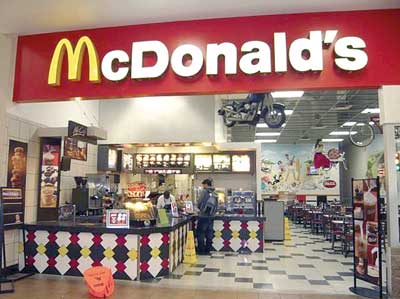
The author likes to use the example of the fast-food chain McDonald’s to explain the three fundamental principles of Lean: quality, cost and delivery. Like it or not, customers go to McDonald’s because they expect exactly the same product from any restaurant in any country at any time of day, delivered to them rapidly and at a cost they perceive to be good value. This is exactly what Lean is about.
The underlying basis of Lean, and how to establish optimal levels of quality, cost and delivery, is the elimination of waste from the process. There are seven principal sources of waste, which go under the acronym of “Tim Wood”:
- Transport
- Inventory
- Motion
- Waiting
- Over-processing
- Overproduction
- Defects
– to which an eighth can be added: the under-utilisation of skills in the business, which may be otherwise involved in reactive or waste activities.
These waste activities are called non-value adding activities and add nothing to the customer’s product. By eliminating the seven wastes, a business can eliminate non-value adding activity and greatly increase the proportion of value-adding activities, thus reducing cost, making products more rapidly and always to a high quality.
How reliability affects the seven wastes
Transport: equipment failures mean raw materials and labour need to be transported to other available equipment lines or subcontractors to produce the product required on time.
Inventory: a lack of consistent reliability means increased finished goods stock levels need to be maintained to guarantee the supply of product to customers.
Waiting: breakdowns mean labour standing around idle or engaged in non-value adding activities until the process is restored to working condition.
Defects: A common misconception is that a reliable process is one which does not break down or stop. The author would suggest a more encompassing definition of reliability takes account of the proportion of the product made to the right specification with a minimum of variability, at the right speed without stoppages and only consuming the quantity of raw materials required.
Over-processing: considering the above definition of reliability leads to the conclusion that sometimes one has to process materials to a slightly higher standard than required to counter variation in the process.
Overproduction: if you are not sure you can guarantee 100% defect-free products every time, a logical, common approach is to over-manufacture by a safety margin to ensure that you have the right amount of defect-free materials available to supply to the customer.
Designing for reliability
To design for reliability, it is necessary to understand the evolution of maintenance and the research work done on reliability and safety in the aircraft industry, which have created a mode of transport with levels of safety and reliability unrivalled by any other.
When labour was cheap, and equipment was simple, a preventive maintenance strategy was not essential, and businesses could afford to fix things when they broke down – in other words, run them to failure. Nowadays, it is well understood and documented that a run to failure strategy costs 5-10 times as much as an active and preventive approach to reliability.
Early preventive maintenance strategies were based on the simple premise that equipment and components fail due to age. Later research would prove that this theory is only applicable for around 10% of failures that happen in industrial processes. Unfortunately, many businesses still apply this type of thinking across the board and fail to identify and prevent most of failures which have no relationship to age.
Research done in the aircraft industry in the late 1970s by Nowlan and Heap of United Airlines and published in a paper entitled Reliability Centred Maintenance [1] opened the gate for aeroplane safety to increase by orders of magnitude and demonstrated, contrary to popular opinion at the time, that higher reliability means lower maintenance costs.
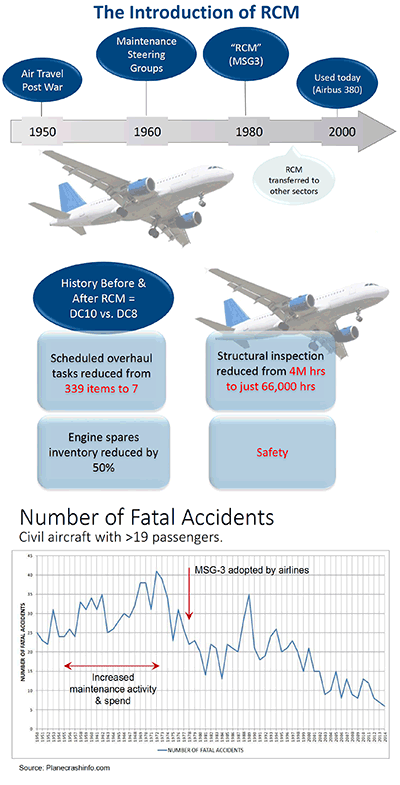
Comparing the Douglas DC-8, designed before RCM, and the DC-10, designed after it, scheduled overhaul tasks were reduced from 339 items on the DC-8 to 7 on the DC-10; the engine spares inventory was reduced by 50%; and structural inspection was reduced from 4 million staff hours to just 66,000.
Perhaps the element of Nowlan and Heap’s research which paved the way for improvements in reliability in the aircraft industry and in many other industrial applications over the past 40 years was a revised understanding of the relationship between reliability and the age of equipment or components. Nowlan and Heap’s research shows that 89% of failures occur randomly and the vast majority of these, some 68%, are caused by human intervention in either operation or maintenance of the process.
By adopting a condition-based approach to reliability, users of the reliability centred maintenance approach can:
- Achieve much higher levels of reliability. Mean time between failure (MTBF) for aircraft is approaching 100 years for major technical faults or breakdowns
- Undertake up to 80% of maintenance tasks with the process in operation
- Undertake up to 75% of maintenance tasks by operators with little or no additional technical training
- Reduce maintenance costs by 40%.
RCM is used as a tool to design for reliability by:
- Understanding the desired levels of performance of the equipment in its operating environment
- Predicting all the ways in which equipment can fail to achieve these levels of performance due to man, materials, methods, Mother Nature and the machine itself
- Analysing each of these failure modes in detail to root cause and establishing an appropriate mechanism for predicting or preventing that failure mode from occurring
- Choosing an appropriate frequency for inspection and monitoring based on a detailed understanding of the failure mechanism
- Integrating these monitoring and inspection tasks with requirements to monitor and maintain the quality of the products being made, the safety of the environment and the efficiency of the production process.
A partnership between Lean and RCM
Bringing these two methodologies together gives a reliable process and a firm foundation from which to start eliminating waste and non-value adding activities: in other words, being Lean.
Equipment operators are involved in the reliability strategy, performing simple checks that require no time, no tools and no training. Many of their day-to-day product quality monitoring activities are linked directly to the reliability and performance of equipment and its components.
Using techniques such as statistical process control, integrated teams of production and maintenance technicians can monitor variation of the process and detect early signs of failures before they happen.
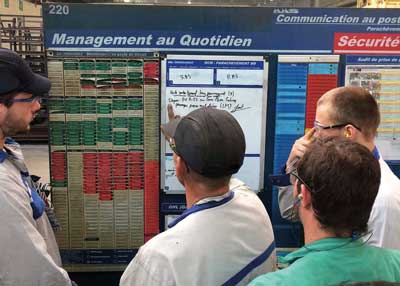
A detailed understanding of the process and of the desired levels of performance mean equipment and processes can be centre-lined to make it “easy to do right, difficult to do wrong” and to make it obvious when things start to change.
By reviewing process conditions – that is, reliability – on a daily basis and with the same level of priority and focus given to quality and safety, the maintenance function is integrated into the Lean strategy and can add real value by identifying risks to costs, quality and delivery in their infancy and take appropriate steps to prevent these from becoming losses.
References
[1] AD/A066 579 Reliability-Centred Maintenance: F S Nowlan and H F Heap, United Airlines, San Francisco, California, December 1978 – reproduced by US Department of Commerce, National Technical Information Service, Springfield, VA 22161
https://www.maintenance.org/fileSendAction/fcType/0/fcOid/399590942963794131/filePointer/399590942964794719/fodoid/399590942964794717/Pages_from_RCMOrig
About EMS Cognito
EMS Cognito is an international business process improvement consultancy, based in the UK, with a track record of helping leading businesses in the manufacturing, utilities, industrial, transport, IT, education and facilities management sectors to generate tangible and sustainable benefits through process improvement.
EMS Cognito has trained Lean RCM practitioners and facilitators in the food and drink, water, recycling and automotive sectors. Black & Veatch is a Lean RCM Licensed partner.
The Lean RCM qualification is a customised award formally recognised by the Scottish Qualification Authority.
Lean RCM methodology is trademarked by EMS Cognito.

